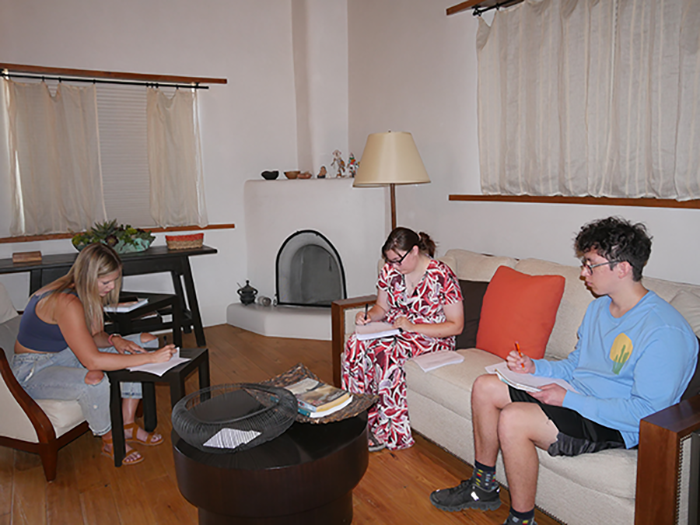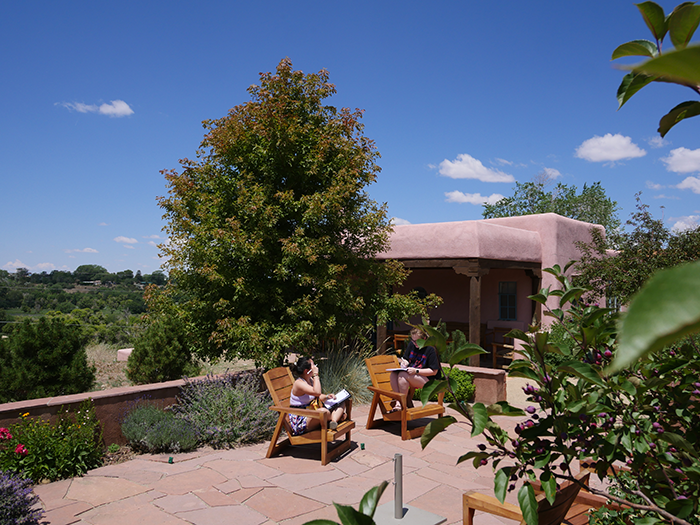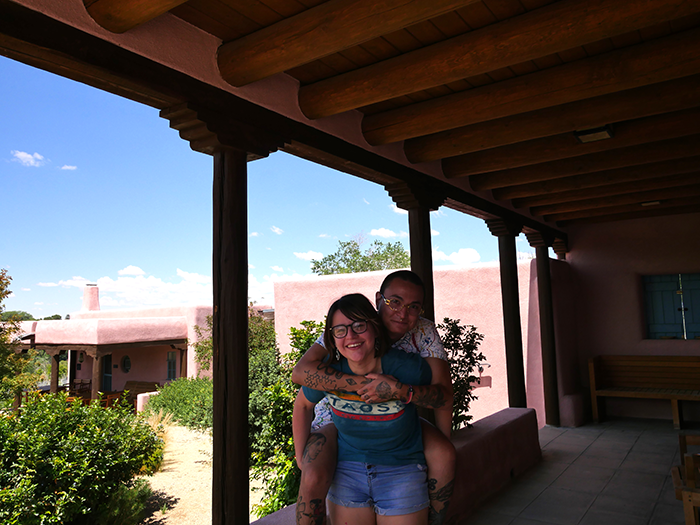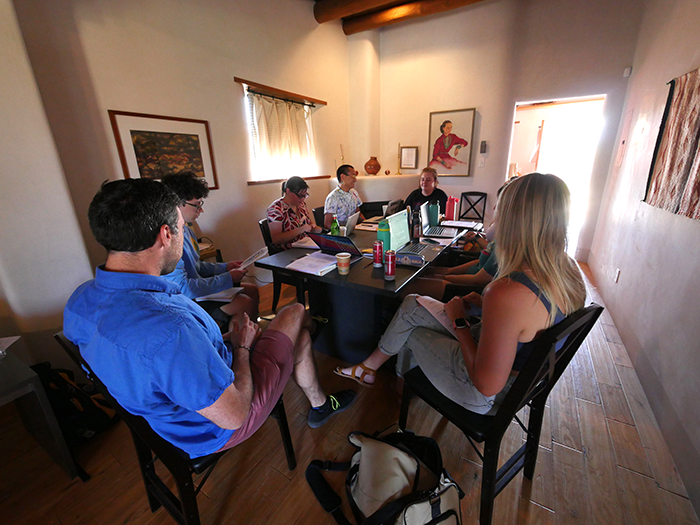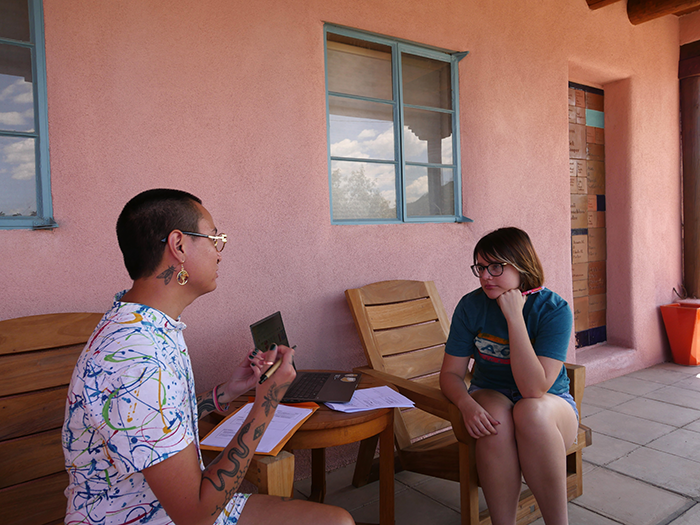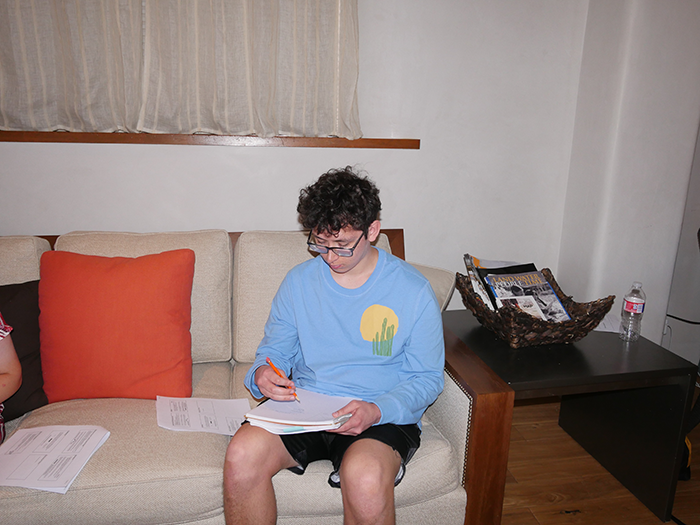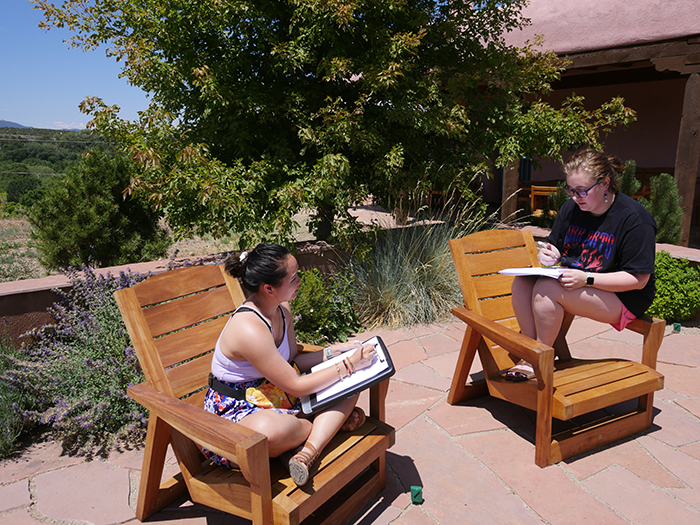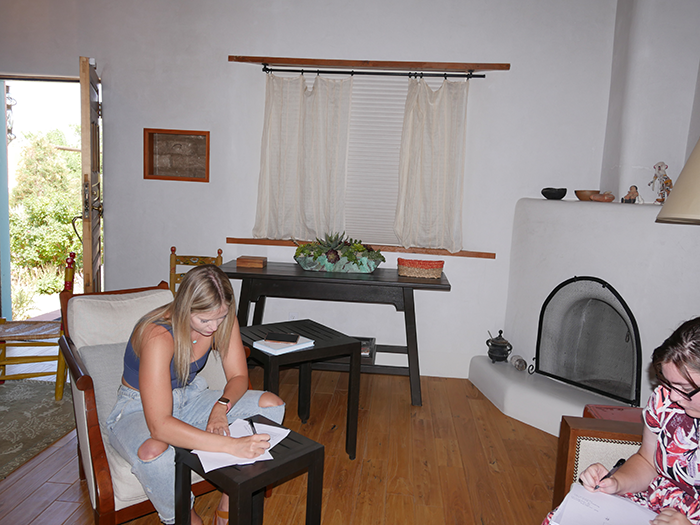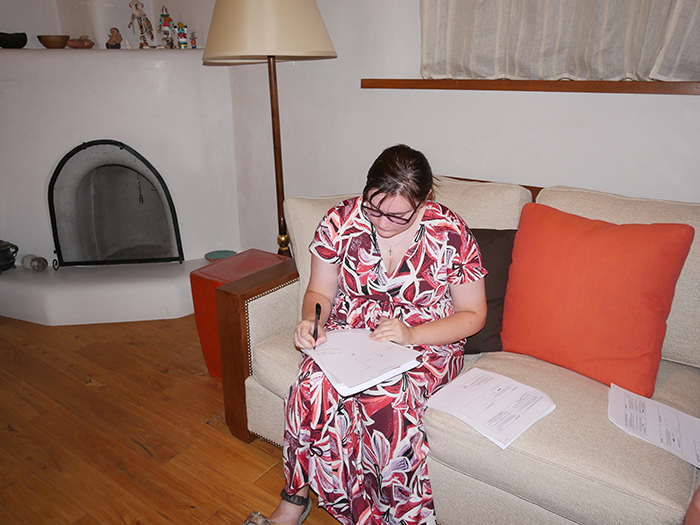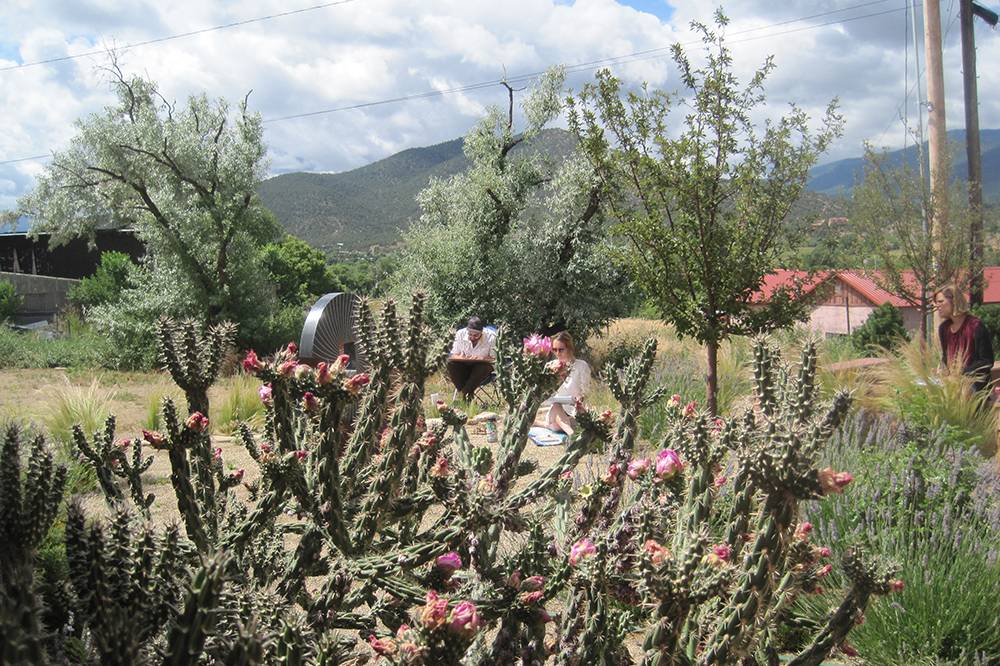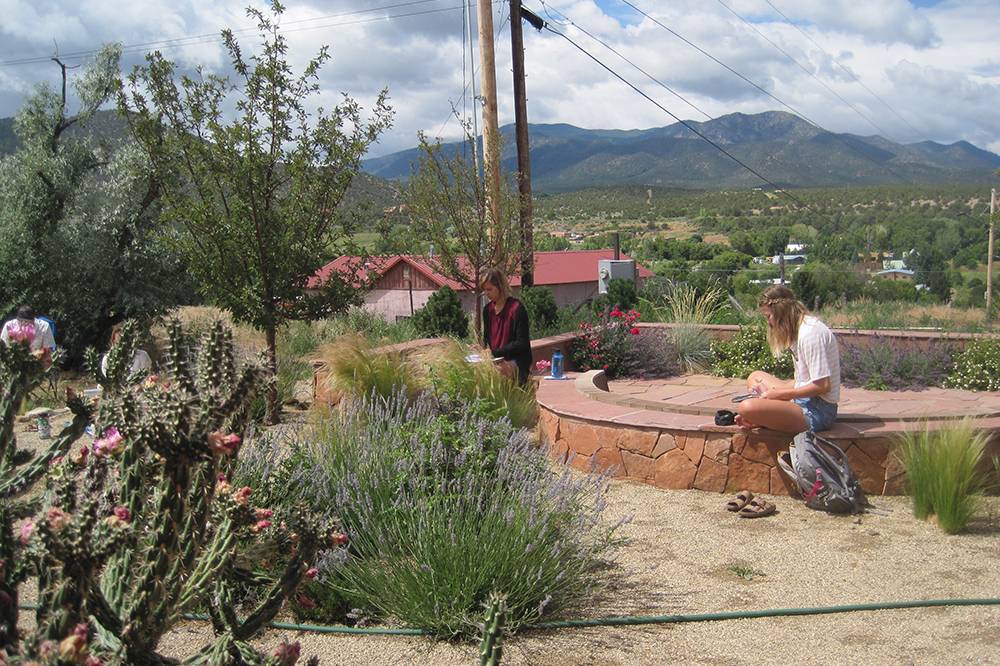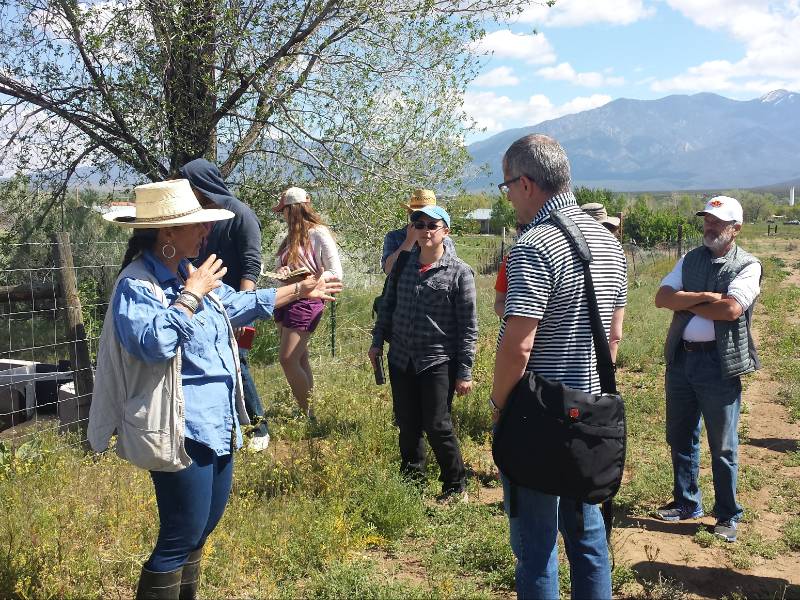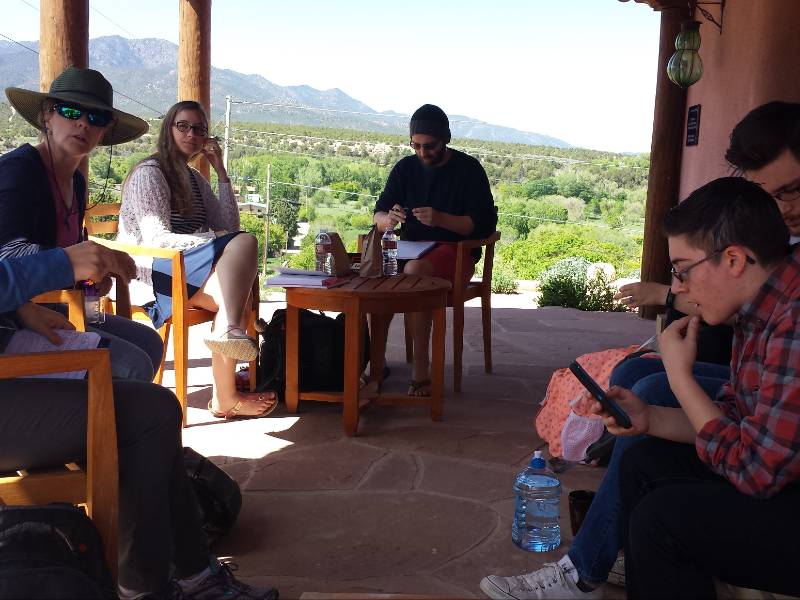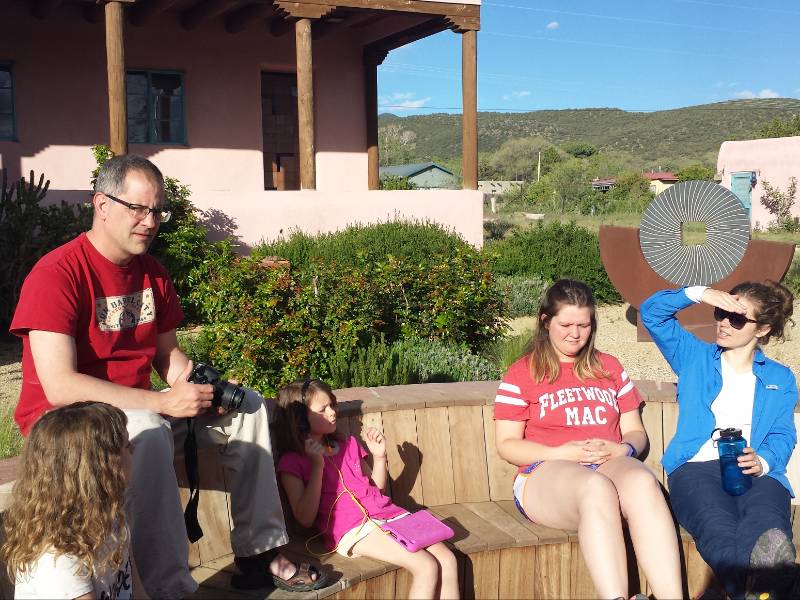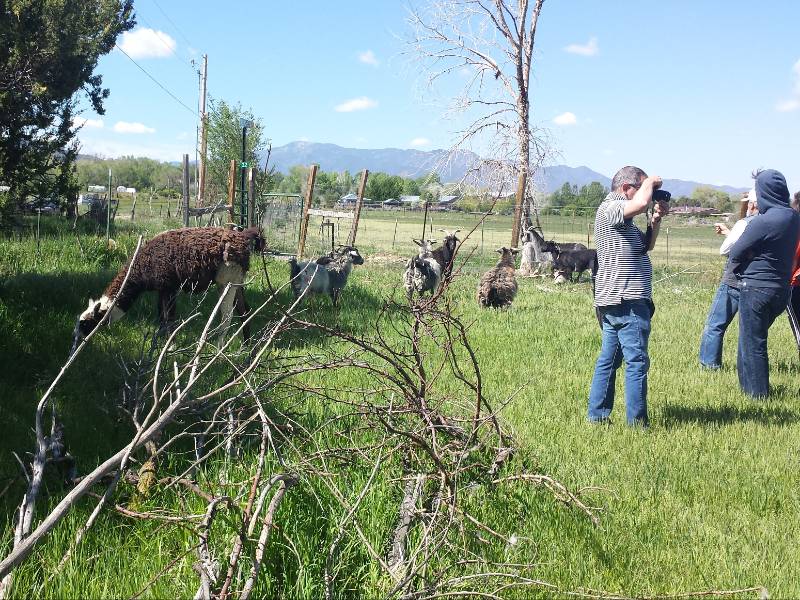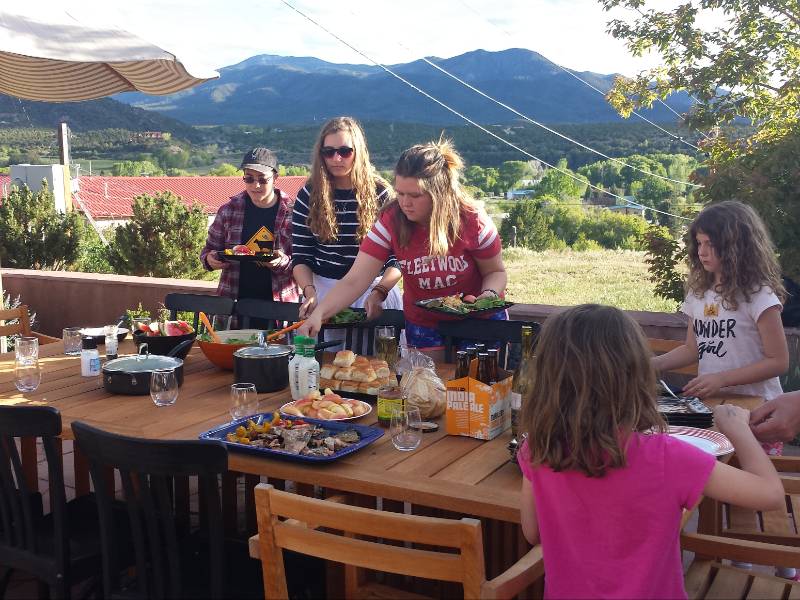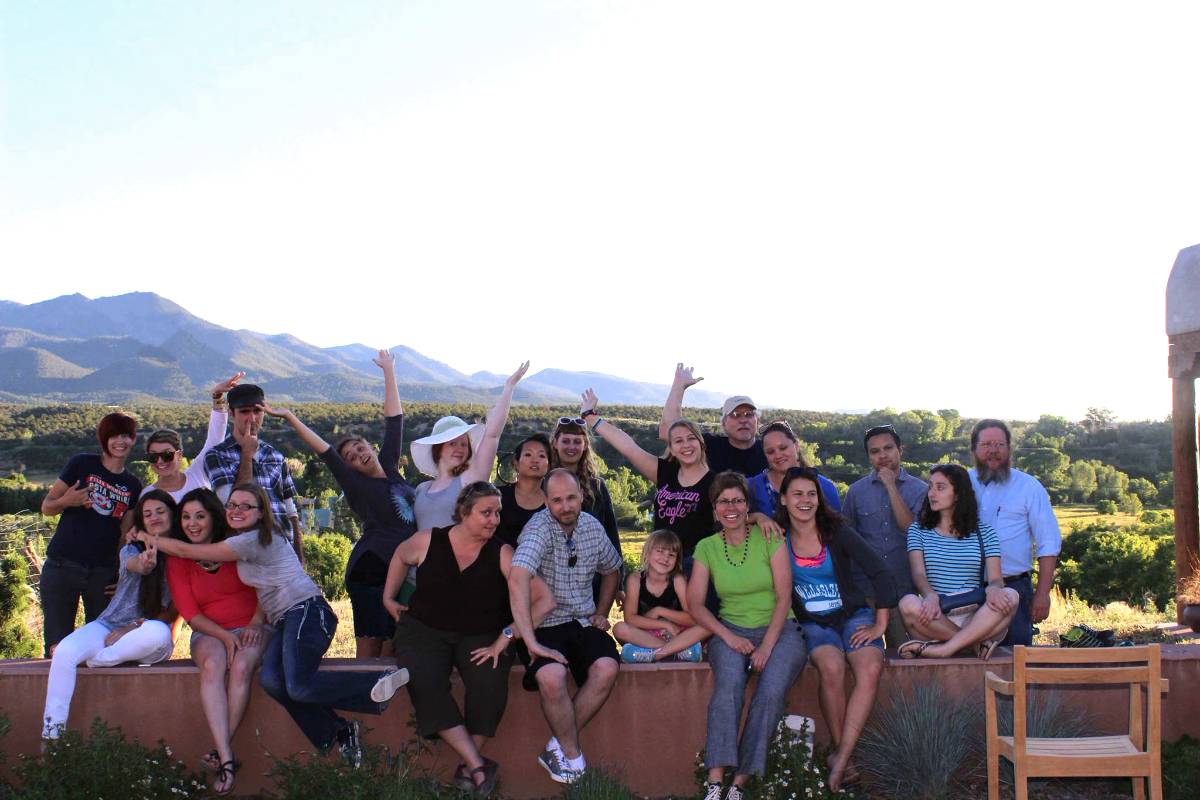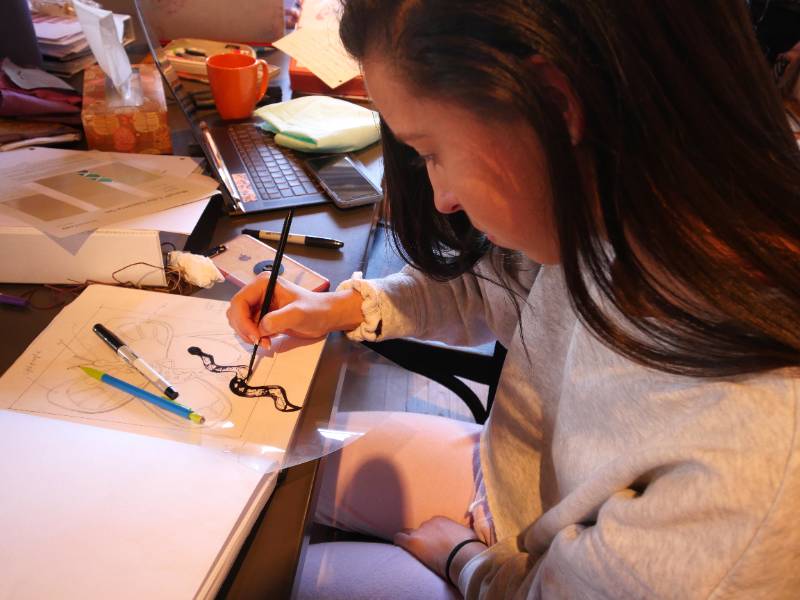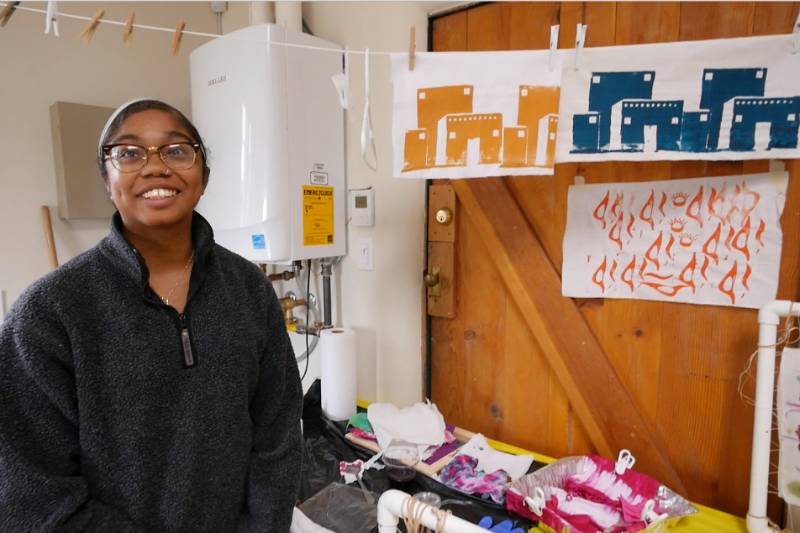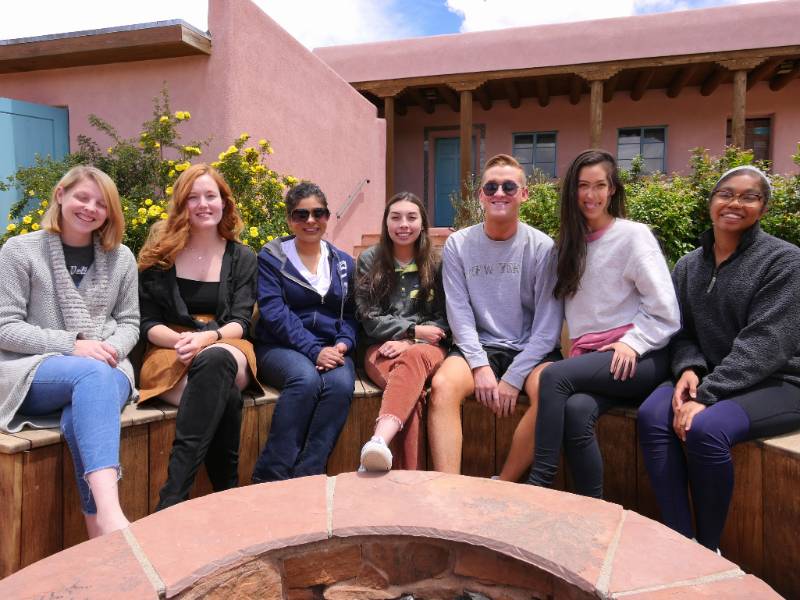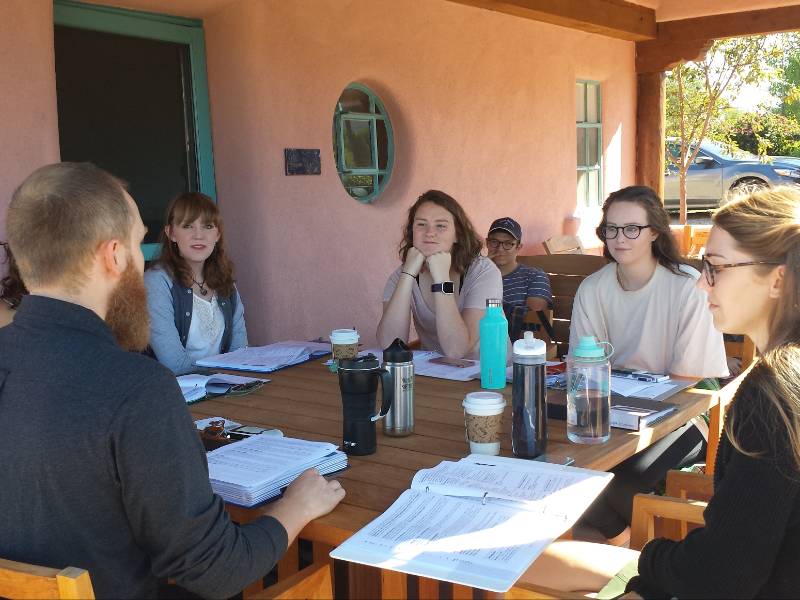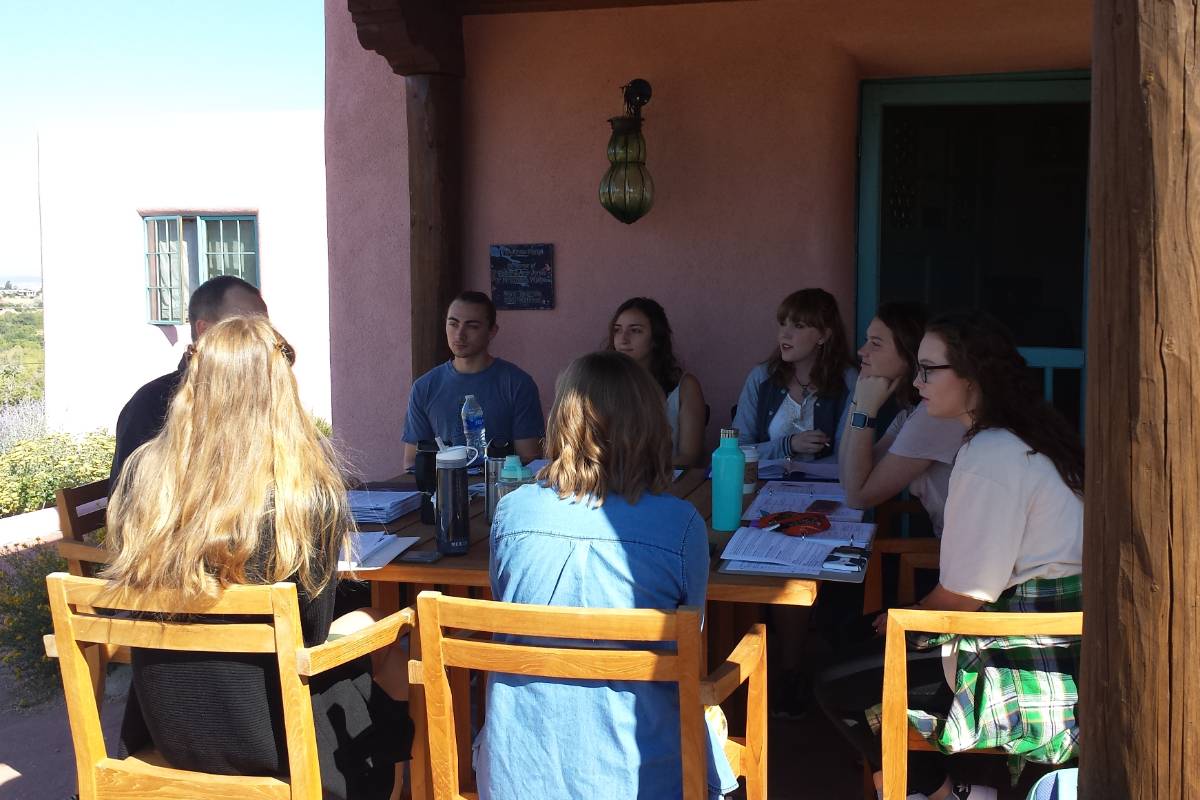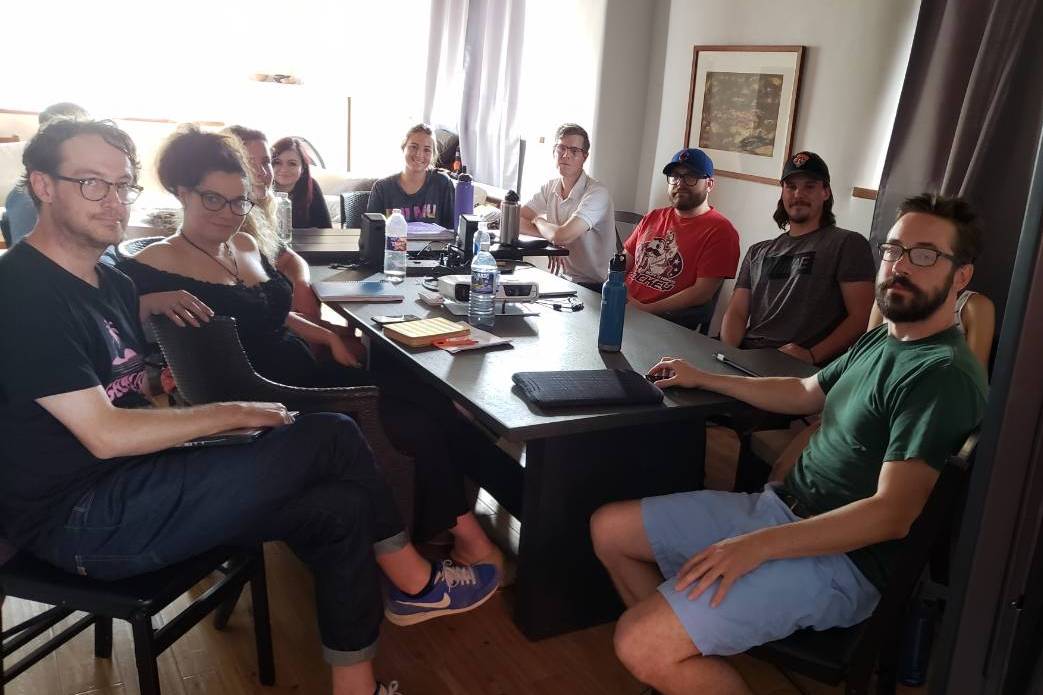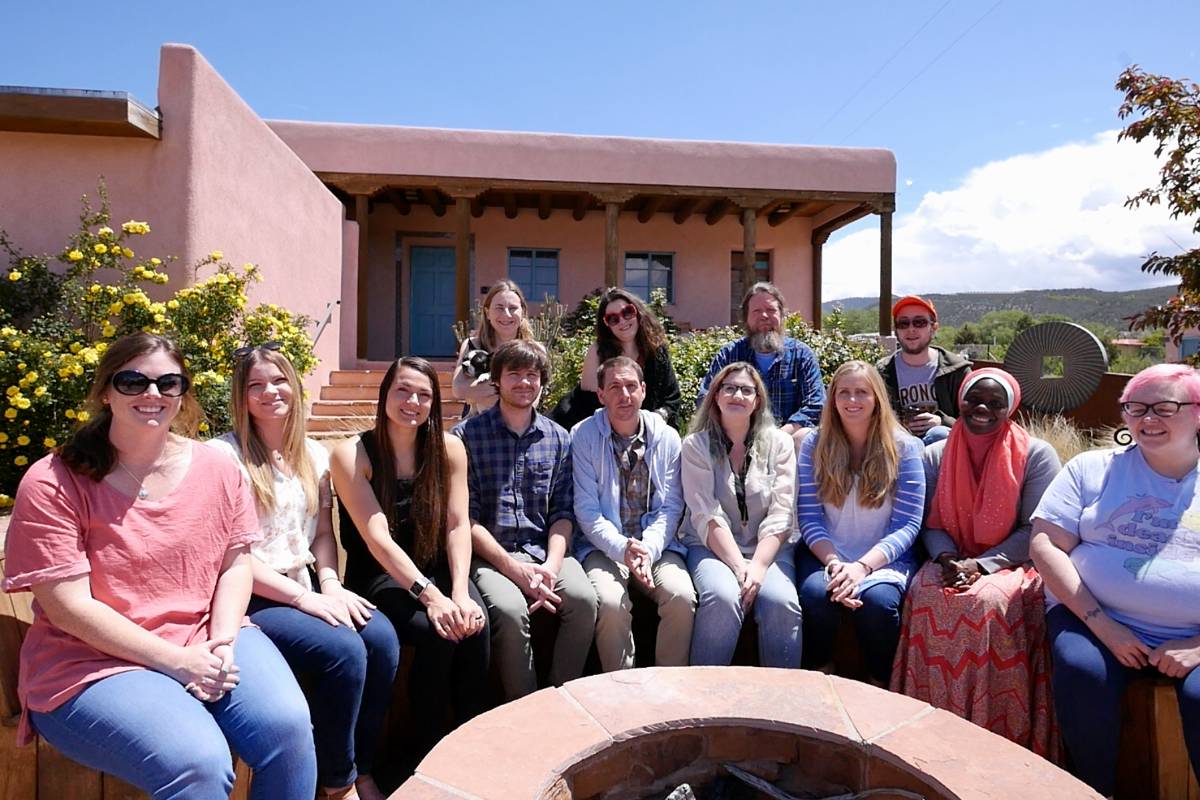Summer 2025
ENG 4630/5730: Haunted Taos: Ghosts Stories as Social Justice
June 9-20, 2025
Instructor: Aimee Parkison | Department of English, Creative Writing Program
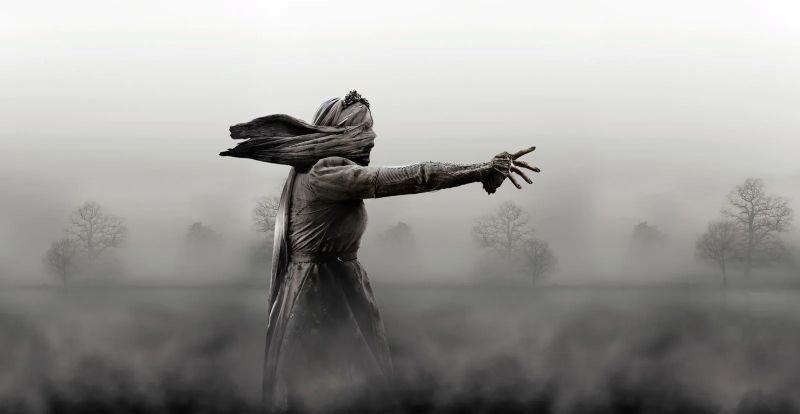 In this creative writing course, we will write, study, and tell ghost stories to examine
how a “ghost” might function as a reminder of past injustice and a pathway towards
healing. In addition to writing and workshopping original stories, we will study the
craft and culture of ghost-story lore as a hybrid literary genre connected to cultural
influences. In what ways can hauntings and the uncanny be understood as wish fulfillment,
a desire for closure? To explore this, we will focus on hauntings connected to Taos
and the Southwest as well as ghost stories of national, international, and literary
significance–haunted oral histories, theories, legends, folklore, sightings, and narratives.
In addition to attending fiction workshops at the Doel Reed Center, writers are encouraged
to visit locations related to death, legends, and ghostly lore, including cemeteries,
museums, and “haunted” locations in and near Taos while crafting narratives that echo
the past in the present.
In this creative writing course, we will write, study, and tell ghost stories to examine
how a “ghost” might function as a reminder of past injustice and a pathway towards
healing. In addition to writing and workshopping original stories, we will study the
craft and culture of ghost-story lore as a hybrid literary genre connected to cultural
influences. In what ways can hauntings and the uncanny be understood as wish fulfillment,
a desire for closure? To explore this, we will focus on hauntings connected to Taos
and the Southwest as well as ghost stories of national, international, and literary
significance–haunted oral histories, theories, legends, folklore, sightings, and narratives.
In addition to attending fiction workshops at the Doel Reed Center, writers are encouraged
to visit locations related to death, legends, and ghostly lore, including cemeteries,
museums, and “haunted” locations in and near Taos while crafting narratives that echo
the past in the present.
ART4800: Experiencing Taos Architecture through Web Design
June 9-20, 2025
Instructor: Ting Wang-Hedges | Department of Art, Graphic Design, and Art History
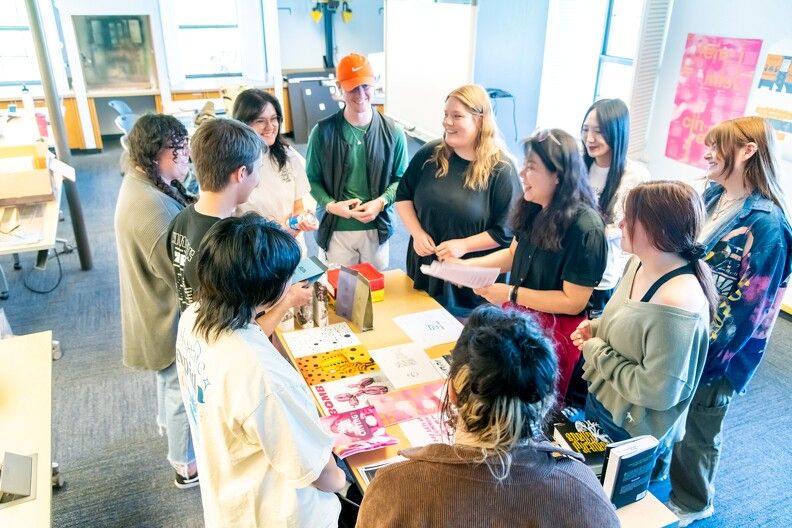 In this course, students will have the opportunity to design and prototype a long-scroll
page website using Figma, a cloud-based design and prototyping tool that is free to
students and offers full access to all its features. While an introduction to Interaction
Design and Website Basics, including web anatomy and structure, will be covered, students
will focus their designs on the rich architectural heritage of Taos, New Mexico. Each
student will select a specific building or landmark in or around Taos, and their website
will serve as a captivating storytelling platform. The objective is to explore the
intricacies of their chosen architectural piece—examining its history, unique attributes,
and the influences of Indigenous culture in its design. The final outcome will be
a long-scroll website that provides an engaging and informative experience, allowing
visitors to learn about the significance of Taos architecture while appreciating its
cultural context.
In this course, students will have the opportunity to design and prototype a long-scroll
page website using Figma, a cloud-based design and prototyping tool that is free to
students and offers full access to all its features. While an introduction to Interaction
Design and Website Basics, including web anatomy and structure, will be covered, students
will focus their designs on the rich architectural heritage of Taos, New Mexico. Each
student will select a specific building or landmark in or around Taos, and their website
will serve as a captivating storytelling platform. The objective is to explore the
intricacies of their chosen architectural piece—examining its history, unique attributes,
and the influences of Indigenous culture in its design. The final outcome will be
a long-scroll website that provides an engaging and informative experience, allowing
visitors to learn about the significance of Taos architecture while appreciating its
cultural context.
MUSC 4600/5600: Chamber Music – Taos Edition
June 30 - July 12, 2025
Instructor: Ryan Robinson | Michael and Anne Greenwood School of Music
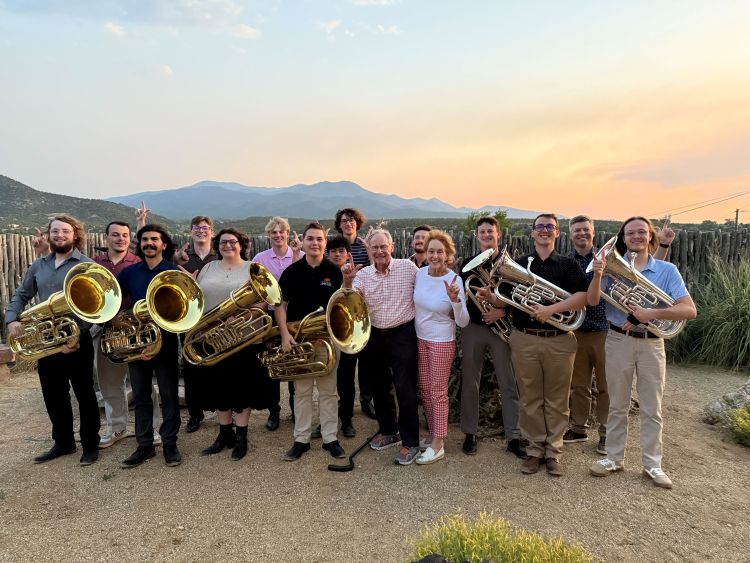 This Brass Chamber Music course is designed to offer students collaborative and immersive
experiences in small ensemble settings, focusing on the unique challenges and rewards
of performing brass repertoire. Students will explore a wide range of chamber music,
from classical to contemporary works, and will develop skills in ensemble playing,
communication, and interpretation. Emphasis will be placed on the importance of blending
sound, perfecting intonation, and crafting a cohesive musical interpretation within
the group. Through regular rehearsals, coaching sessions, and performance opportunities,
students will gain a deeper understanding of the intricacies of brass chamber music
and refine their musicality in a dynamic, team-oriented environment. In addition to
ensemble work, the course will address practical aspects such as rehearsal techniques,
programming, and the development of effective practice habits within a chamber setting.
Students will be exposed to both standard literature and more diverse, less traditional
works, providing a well-rounded experience. The course will culminate in public performances,
offering students the opportunity to showcase their progress and gain experience in
a live setting. This class encourages individual growth while fostering teamwork,
helping students develop the tools to become both skilled soloists and versatile chamber
musicians.
This Brass Chamber Music course is designed to offer students collaborative and immersive
experiences in small ensemble settings, focusing on the unique challenges and rewards
of performing brass repertoire. Students will explore a wide range of chamber music,
from classical to contemporary works, and will develop skills in ensemble playing,
communication, and interpretation. Emphasis will be placed on the importance of blending
sound, perfecting intonation, and crafting a cohesive musical interpretation within
the group. Through regular rehearsals, coaching sessions, and performance opportunities,
students will gain a deeper understanding of the intricacies of brass chamber music
and refine their musicality in a dynamic, team-oriented environment. In addition to
ensemble work, the course will address practical aspects such as rehearsal techniques,
programming, and the development of effective practice habits within a chamber setting.
Students will be exposed to both standard literature and more diverse, less traditional
works, providing a well-rounded experience. The course will culminate in public performances,
offering students the opportunity to showcase their progress and gain experience in
a live setting. This class encourages individual growth while fostering teamwork,
helping students develop the tools to become both skilled soloists and versatile chamber
musicians.
Summer 2024
HIST 3803: A History of Food – Taos Edition
May 20-June 1, 2024
Instructor: Marten W. Brienen | School of Global Studies
Instructor: Bailey F. Norwood | Department of Agricultural Economics
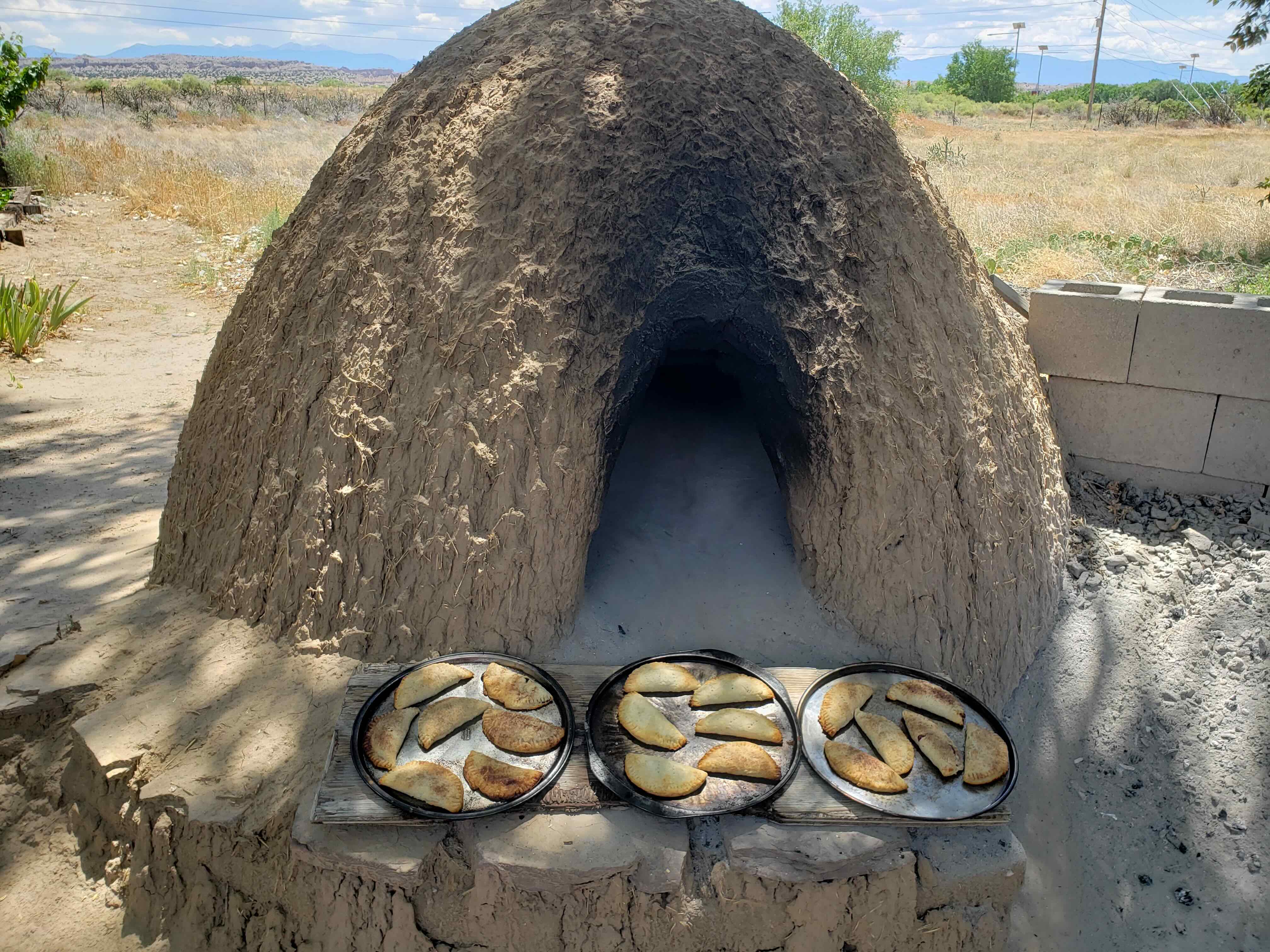
Taos represents a unique way of delving into the history of food. The cuisine of this region not only combines culinary traditions from different parts of the world, but also preserves traditions and practices that are unique. It is an ideally suited location to discuss the Columbian Exchange and how it transformed not only the planet, but what and how we eat. The forced integration of the New World into global trade networks transformed food and cuisine around the globe, while food and food production in the region were transformed by the arrival of the Spanish and later the American settlers with their diverse backgrounds.
The regional cuisine of Taos is marked by the fusion of Puebloan, Spanish, Mexican, and American cuisines and traditions, giving us the opportunity to explore important themes within the history of food through this very particular lens. As part of the course, we will explore traditional Puebloan agricultural practices and the resulting foods in collaboration with the Taos Pueblo farm. It will also be important to examine the transformation of agricultural practices and the expansion of farming through the acequia system. Students will learn about the transformation of regional foods by looking at the arrival of new crops and the integration of bread into the diet through an examination of the hornos (adobe outdoor ovens) we find throughout the landscape.
Students will additionally learn about modern farming and ranching and their adaptations to the landscape and climate of Northern New Mexico through visits to local farms and ranches. Likewise, we will explore modern systems for the maintenance of fisheries by visiting the fish hatchery near Questa. Our plan is also to integrate cooking into the course by working with our students to recreate some of the dishes that are so symbolic of the region and its history. This would include traditional Puebloan foods, foods consumed by frontiersmen such as Kit Carson, the bread made in a traditional horno, sopapillas, and green chili stew.
ART 4800 Special Studies in Art — Large Format Analog Photography/
ART 4280 Photography Studio
June 3-14, 2024
Instructor: Andy Mattern, Ph.D. | Associate Professor of Photography at Oklahoma State University in Stillwater.
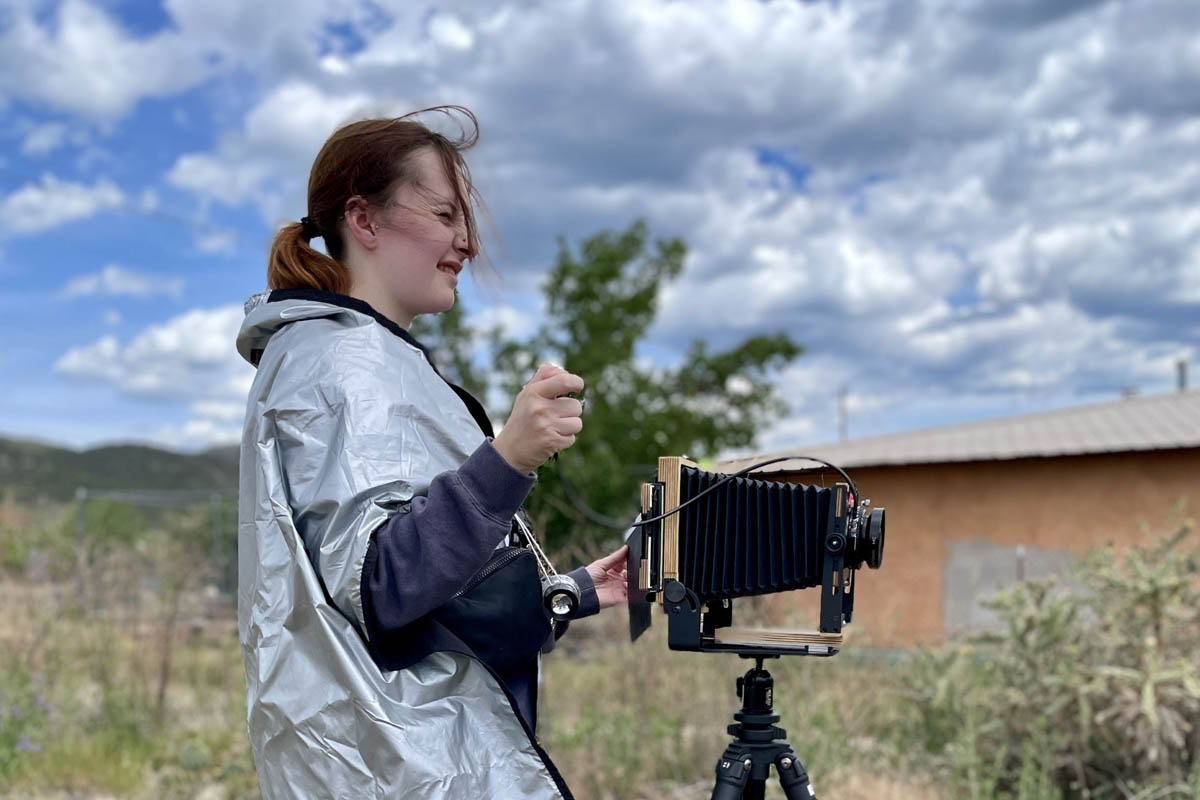
In this hands-on course, students will learn the basics of large format film photography and create one-of-a-kind cyanotype contact prints from the negatives they produce. The photography program in the OSU art department has 14 large format 4x5 “field cameras,” which present a unique — and much slower — way of photographing. The process includes using a tripod and deliberately adjusting a bellows camera under a dark cloth in order to capture singular images on 4x5" sheets of film. These sheets of film can be handled in dark bags and then processed in tanks, all within a fully lit room. The negatives can then be scanned, or contact printed directly onto cyanotype coated paper, for example.
ENGL 4220/5480: The Bomb & The Bohemians
July 1-13, 2024
Instructor: Ryan Slesinger, Ph.D.
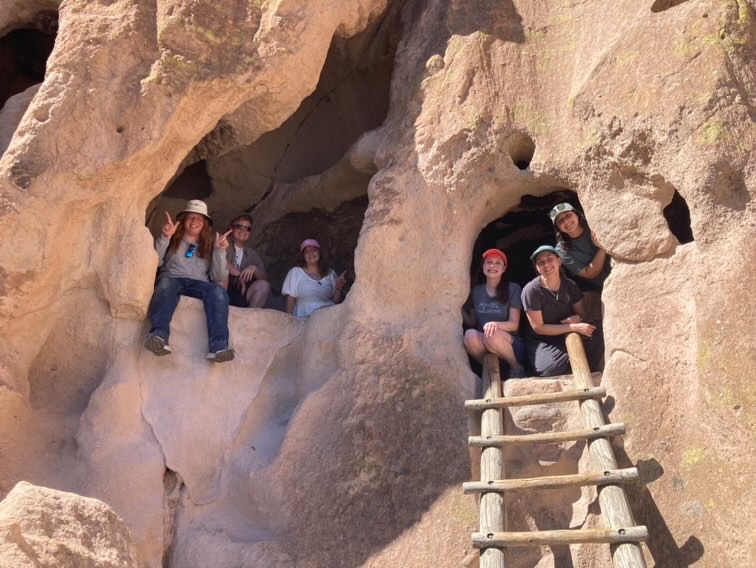
This course will illustrate two entwined cultural histories of the Northern New Mexico region: the successive waves of countercultural populations attracted to Taos, and the development of the atomic bomb in Los Alamos. The course foci will be organized into three sections: First we will focus on the collection of bohemian artists who gathered in the region in the first quarter of the twentieth century. Then we will turn our attention to Los Alamos, and finally we will consider the counterculture artists of the 1960s, how their art differs from their predecessors who lived in a pre-bomb world, and their legacy in the region.
ARCH 4100: Collective Housing in Taos: An Architectural Historical Inquiry
July 1-13, 2024
Instructor: Jared Macken, Ph.D. | OSU School of Architecture
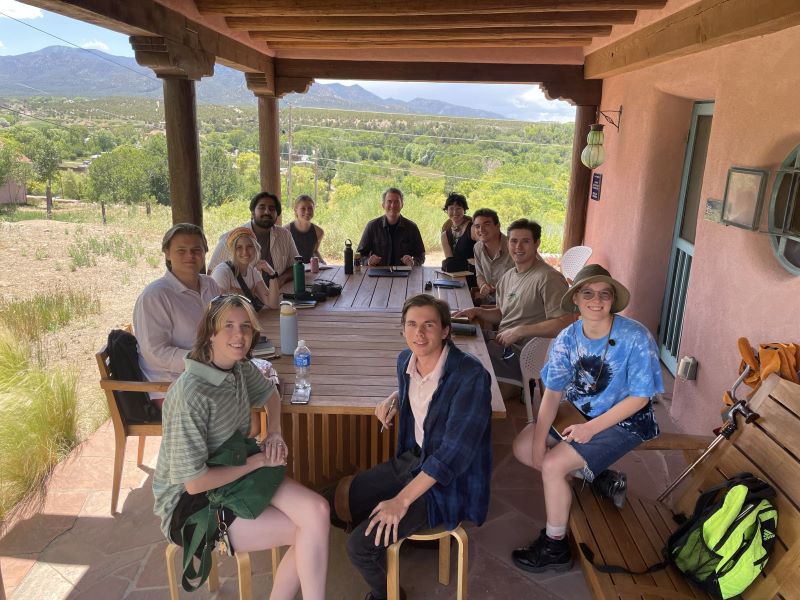
Collective Forms are architectural structures consisting of many different aggregated parts that form larger cohesive wholes. Taos provides historically important examples of collective form. These structures include Taos Pueblo, 1350 CE–present, Taos Earthship Community, 1970’s , Valverde Intentional Living Commons, 2006; and Taos Town Square and Main Street, 1796–present. Each of these examples of collective form integrate housing with public/social space in order to create vastly diverse examples of miniature cities. By studying these structures through the lens of architecture, students will gain a better understanding of the architectural history of early America, but also explore different lifestyles and ways of life that span centuries.
Summer 2021
Read more about the Summer 2021 Academic Credit Courses here
English 4080 / 6270: Narratives of Identity: Language, Community, & Place
July 5 - 16, 2021
Instructor: Michael Amory, Ph.D. | Assistant Professor TESOL/Linguistics
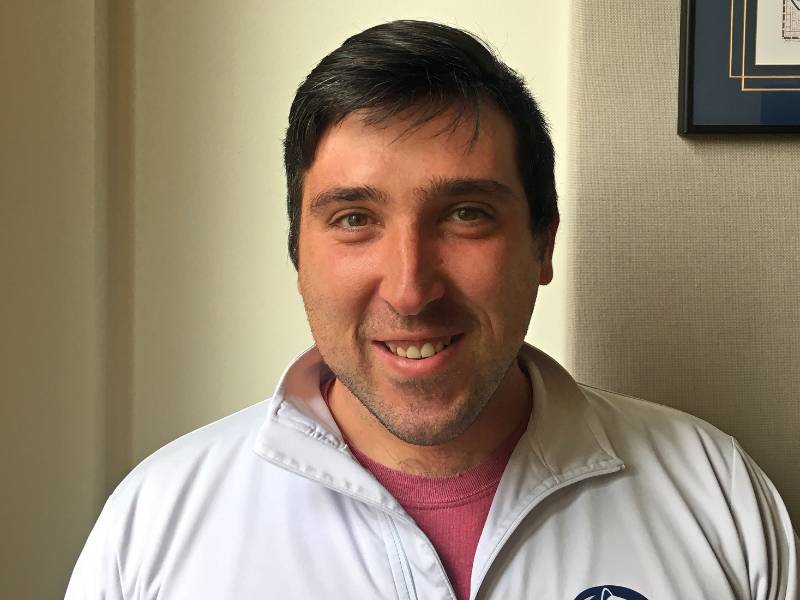
This course will focus on narratives and storytelling and the ways in which they construct individual and community identity as historically and culturally grounded experience. Through exploring constructs such as “identity,” “self,” and “subjectivity,” this course will analyze how narratives and storytelling illuminate the nature of access, agency, and power as individuals come to understand and express themselves. In addition, this course will consider how these insights might enhance a teachers’ understanding of their students’ lives and influence the practice of teaching. As a multicultural community, Taos provides an ideal location for students to experience and explore multicultural and multilingual communities and the stories that shape, conceptualize, and contextualize them. Students will engage in two weeks of reading, writing, and discussion of the ways in which narratives shape and demonstrate individual and community identity, as well as multicultural visits and field trips in both Taos and Santa Fe. Throughout the course, students will relate narratives to community and place through visits to three pueblos: Ohkay Owingeh, Taos, and Picuris. Other visits will include the Martinez Hacienda, the Quintero Sheep ranch, and the New Mexico History Museum’s “Telling New Mexico: Stories from Then and Now” exhibit.
ART 4450: Motion Design Studio: New Mexico as an Inspiration for Motion Design
July 5 - 16, 2021
Instructor: Justen Renyer, MFA | Associate Professor of Graphic Design
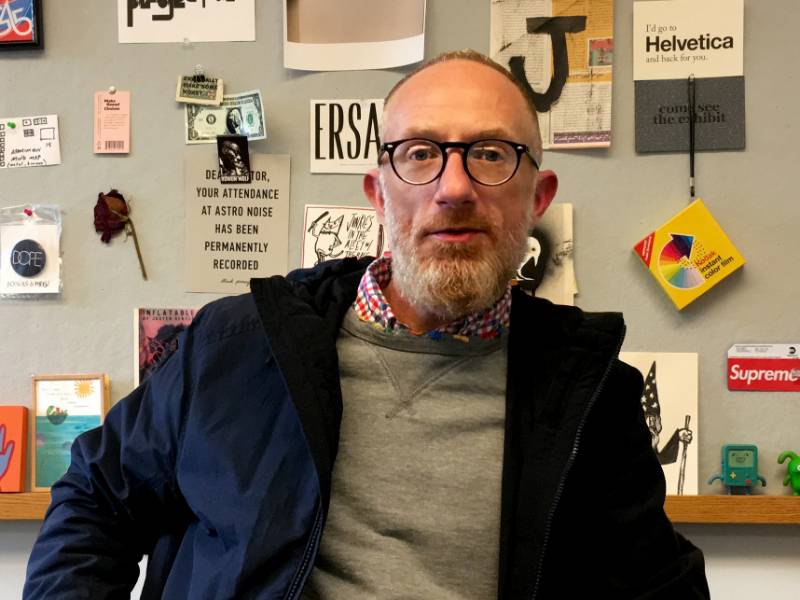
If you’ve ever found yourself intrigued by an opening title sequence for a film or series, you have probably noticed that they have evolved into concentrated short films in and of themselves. While usually 30 seconds to one minute long, they set the mood, foreshadow themes in the story, and establish a compelling aesthetic experience through the use of visuals and sound design. Students will be creating an Opening Title Sequence using video footage and images shot at various locations in and near Taos, inspired by the region’s diverse landscape and culture.
Summer 2019
ENGL 4620/ENGL 5720: Writing the New Mexican Landscape
May 20 - 31, 2019
Instructor: Sarah Beth Childers | Department of English
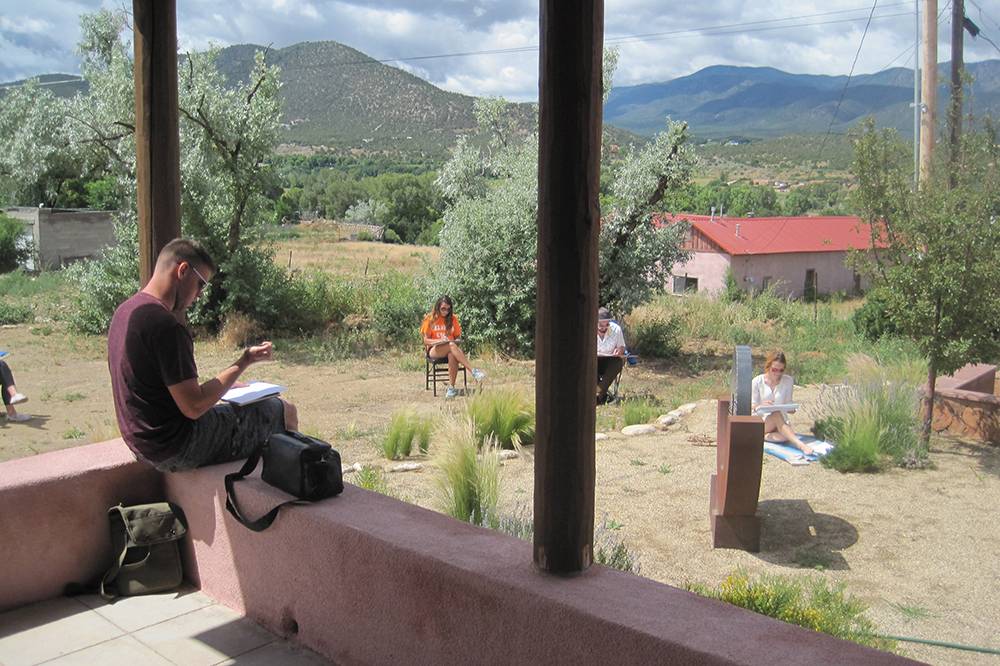
In this course, we will read, write, and workshop creative nonfiction that integrates the physical, cultural, and historical landscape of New Mexico. Along with some fiction and poetry, we will read literary nonfiction by outsider writers and writers whose roots in the area go back hundreds or even thousands of years, including Leslie Marmon Silko, John Nichols, Susan J. Tweit, and Anita Rodríguez. To gain writing material and a fuller understanding of the area, we will take daily field trips, including visits to Taos Pueblo, Bandelier National Monument, Kit Carson National Forest, and the site of the slaying of New Mexico’s first governor. Students will produce several short creative nonfiction pieces and one longer essay, integrating research as well as personal experiences of New Mexico. This course can be taken for either undergraduate (4620) or graduate (5720) credit.
DHM 3533: Clothing and Textile Design
May 20 - 31, 2019
Instructor: Adriana Petrova | Department of Design, Housing, and Merchandising
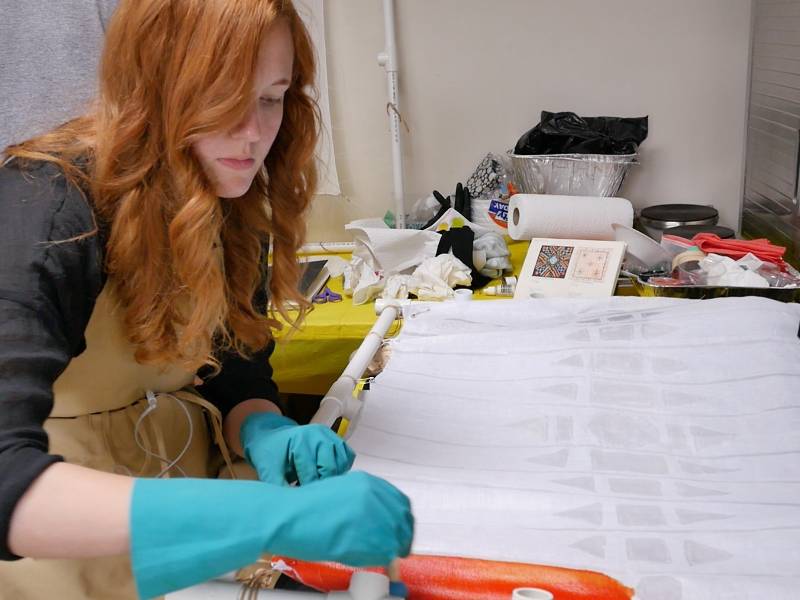
This course will blend teaching basic draping techniques and textile surface design techniques to create garment designs. The class will take advantage of the location of the DRCA in Taos by teaching students about Native American culture, traditions and aesthetic through observation, experience and immersion in the arts and the environment of Taos. Students will explore the textile traditions of the Native people of Taos and other tribes of New Mexico to draw inspiration and create garment and textile designs. Students will visit Taos Pueblo, the galleries, shops, and museums of Taos. Students will have the opportunity to visit with local artists and learn about their design process and techniques. Some of the created clothing designs will be executed in the fashion fabric that will be produced in the class.
ART 4800: Jewelry Making in Taos
July 8 - 19, 2019
Instructor: Chris Ramsay | Department of Art, Graphic Design and Art History
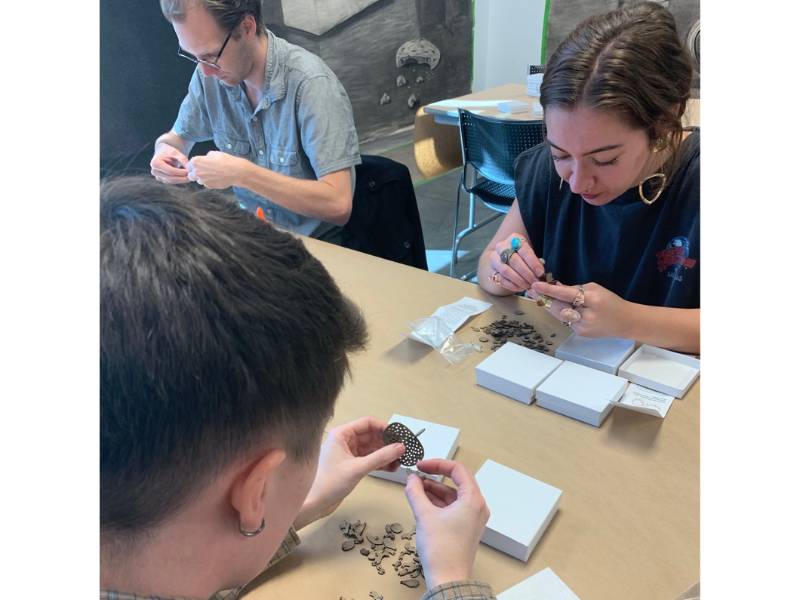
This two-week jewelry making course requires no previous experience and will be taught on the grounds of Oklahoma State University’s Doel Reed Center in Taos, New Mexico. Students will create unique one-of-a-kind jewelry with a distinctly southwestern aesthetic in silver, based upon field trips to museums and historical research sites in Taos and Santa Fe. Traditional metalworking techniques used to create many of the objects observed in the museums/galleries including tufa casting and repoussé conch forms will be demonstrated while learning to silver solder, set stones in both prong and bezel settings, and develop other foundational metalworking skills.
Past Academic Credit Courses
